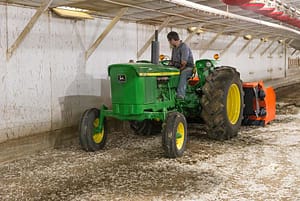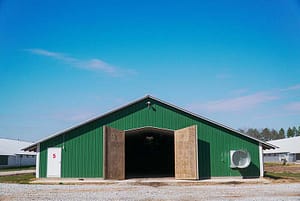
Composting poultry litter is a practice that can vary depending on a number of factors, including the time of year, the geographical area, the weather, the prevalence of chicken diseases and other criteria. However, the following ten tips can serve as a quick reminder about a few things to keep in mind when in house windrowing. These tips were pulled from Bud Malone’s extensive research and analysis, and they may vary slightly according to your unique application. You can read and download the complete set of Guidelines for Composting Poultry Litter here.
- The ideal time to start in house windrowing of litter is the first flock following a total cleanout.
- Windrowing should be implemented within 2 days following bird movement.
- One must manage litter depth in the range of 3 to 6 inches. If depth excesses 8 inches, a portion of the litter should be removed at least on an annual basis.
- The optimum windrow size is ~18 to 24 inches high and conical shape.
- From a pathogen reduction standpoint, the goal is to reach at least 130 F and maintain these temperatures for a minimum of 3 to 5 days.
- For farms with a significant disease challenge, it would be best to remove all litter from the sidewalls and corners and incorporate this litter into the windrow.
- It is best to turn windrows at least once, and several times if possible.
- If caking or moisture is excessive, re-crusting the house after leveling the litter may be required particularly in cool weather.
- Ventilation to remove ammonia and moisture should be provided from the day of in house windrowing until chick placement.
- Wear a respirator with ammonia filters when constructing, turning and spreading windrows.
Request More Information
Want to learn more about composting poultry litter. The Creek View Composter can help you get the job done faster and produce better results. For more information, complete the form or call 864-508-2447.



